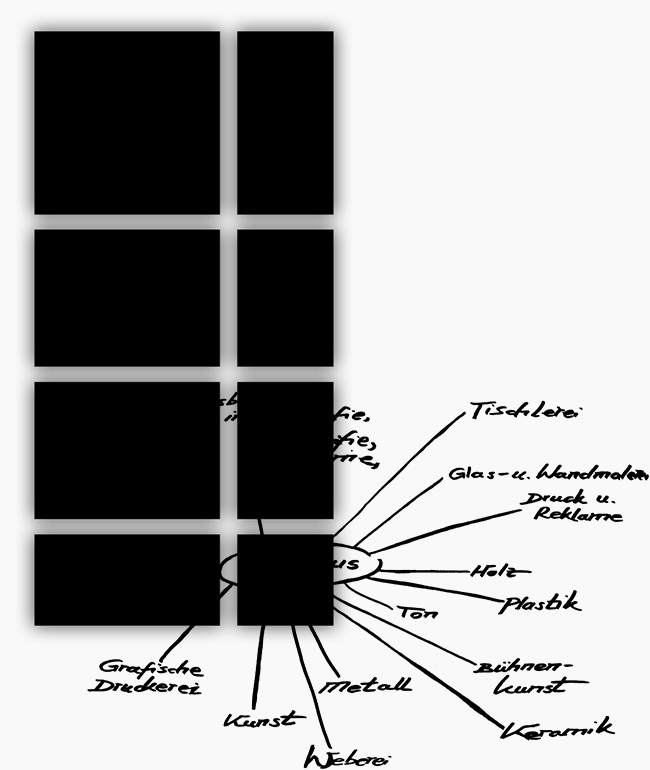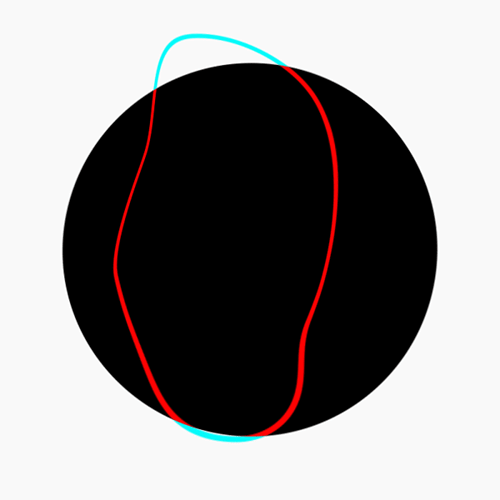Bauhaus & HfG – A journey through time
Weimar, 1919 - The Bauhaus is founded, one of the most important schools for design. 100 years later its influence is still striking.
Weimar, 1919 - The Bauhaus is founded, one of the most important schools for design. 100 years later its influence is still striking.
Weimar, 1919 - The Bauhaus is founded, one of the most important schools for design. 100 years later its influence is still striking.
Bauhaus,
HfG Ulm &
HfG Gmünd
The Bauhaus has shaped the design intensely and lastingly. After its closure, the former Bauhaus student Max Bill together with Otl Aicher and Inge Scholl founded the HfG Ulm, strongly based on the principles of the Bauhaus. The HfG Schwäbisch Gmünd, founded in 1971, is also influenced by the renowned school.
Bauhaus, HfG Ulm & HfG Gmünd
The Bauhaus has shaped the design intensely and lastingly. After its closure, the former Bauhaus student Max Bill together with Otl Aicher and Inge Scholl founded the HfG Ulm, strongly based on the principles of the Bauhaus. The HfG Schwäbisch Gmünd, founded in 1971, is also influenced by the renowned school.
Bauhaus, HfG Ulm &
HfG Gmünd
The Bauhaus has shaped the design intensely and lastingly. After its closure, the former Bauhaus student Max Bill together with Otl Aicher and Inge Scholl founded the HfG Ulm, strongly based on the principles of the Bauhaus. The HfG Schwäbisch Gmünd, founded in 1971, is also influenced by the renowned school.
An exhibition shows the correlations
The Bauhaus celebrates its 100th anniversary in 2019. On this occasion an exhibition will take place, which gives us students the opportunity to plan an interactive exhibit piece. After extensive archival research, the idea of an interactive journey through time evolved, which deals with whose history and evolution, the connections between the schools and meaningful projects.
The following is implemented with the HfG Ulm.

4 time spans –
8 Animations
The section of each school, in this case the HfG Ulm, is also divided into four time periods which show the general development of doctrine, teachers and students. In addition, each section contains a representative, significant design, which is explained by animation and audio.


This visualization is also used in the
static and motion poster. HAVE A LOOK
How to display different
large quantities
The general dynamic graph illustrates several data, e.g. numbers of students, courses and teachers. However, it was difficult to visualize the data because of the large differences in quantity. After testing with several shapes, an organic form proved to be the best to represent differences in quantity and to ensure aesthetic dynamics.

Trial and error with Java and Arduino to get the pressable floor panels to work
Pressure-sensitive floor panels allow a journey through time through the history of the schools, as the user walks over them. Wooden panels are prepared with wires and foam so that when activated, a signal via Arduinio is triggered which starts the correct animation.





Posters – The main animated information graphic as well
as the four presented objects are used for the posters.


Context
4th Semester
Interactive Communication
HfG Schwäbisch Gmünd
Context
4th Semester
Interactive Communication
HfG Schwäbisch Gmünd
Context
4th Semester
Interactive Communication
HfG Schwäbisch Gmünd
Team
Felicia Huber
Leonie Weiss
Lisa-Marie Maier
Team
Felicia Huber
Leonie Weiss
Lisa-Marie Maier
Supervision
Prof. Marc Guntow
Benjamin Thomsen
Supervision
Prof. Marc Guntow
Benjamin Thomsen
Main Tasks
Concept
Motion Design
Arduino
Installation
Motion Poster
Main Tasks
Concept
Motion Design
Arduino
Installation
Motion Poster
Main Tasks
Concept
Motion Design
Arduino
Installation
Motion Poster
2020 © Lisa-Marie Maier